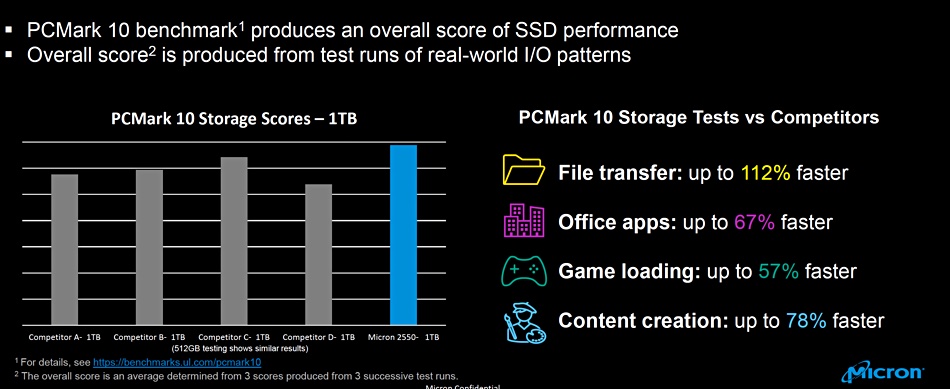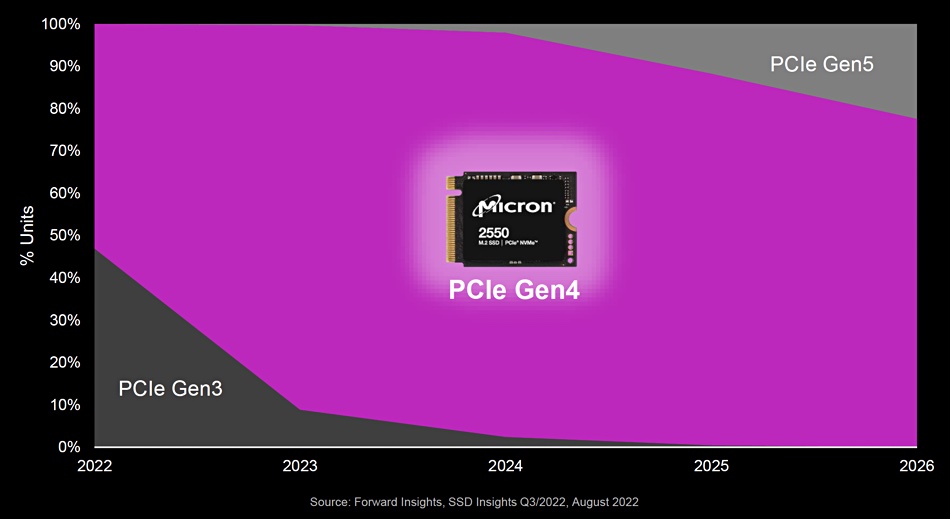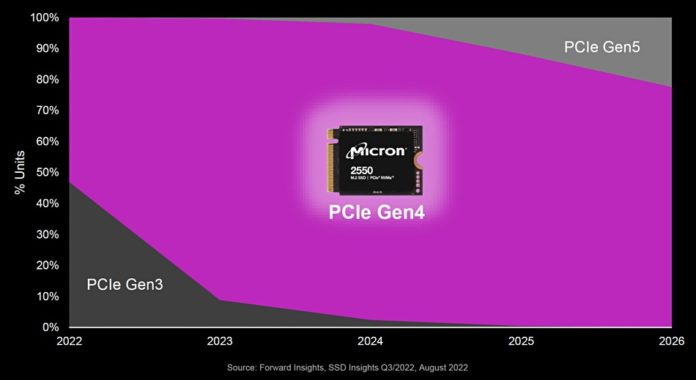Micron has launched a 232-layer client SSD – the first 232-layer NAND after Yangtze Memory Technology to pass the 200-layer boundary – and the diskmaker reckons it’s a winner thanks to its responsiveness and low power draw.
The 2250 is an NVMe drive with a PCIe 4 x 4 interface that comes in 256GB, 512GB, and 1TB capacity points – the same as the preceding 176-layer 2450. It has the same host memory buffer and M.2 format in three sizes: 2280mm, 2242mm, and 2230mm, to give PC and notebook OEMs flexibility in its use.
Praveen Vaidyanathan, VP and GM of the Client Storage Group at Micron, issued a quote: “We focused on delivering a superior user experience for PC users with this SSD. [Its] capabilities deliver impressive application performance and phenomenal power savings.”

These savings are real. The existing 2450 uses <3mW in sleep power state and <400mW in active idle power state. Its active read power consumption is <5.5 watts. Micron has optimized the low power states with the 2550 and it uses <2.5mW in sleep and <150mW in its active idle power state. Active read power consumption is the same <5.5 watts. These power savings – which Micron credits to optimized entry into self-initiated low power states – will help extend notebook battery life.
The performance improvements are real as well. The 2550 has a 6-plane NAND die with an independent word line on each of the six planes allowing concurrent reads. It also has predictive cache loading for its on-drive dynamic SLC cache.
The 2450 put out up to 3.6GBps read bandwidth and up to 3GBps write bandwidth. The 2550 ups these maximum numbers to 5GBps and 4GBps – noticeably faster. The maximum IOPS numbers are similarly improved, with the 2450’s 450,000/500,000 random read/write IOPS becoming 550,000/600,000 with the 2550 – noticeably faster again
Micron says it has better performance on the PCMark 10 storage performance benchmark than competitors:

Its endurance is the same as the 2450: 256GB – 150TBW, 512GB – 300TBW, and 1TB – 600TBW, with a 2 million hours MTTF rating. On this basis and with the improvement over the 2450’s performance and power consumption it should find a positive reception from its PC and notebook OEMs.
Micron believes that PCIe 4 is going to become the SSD sweet spot over the next few years, based on forecasts by analyst house Forward Insights, and has no revealed PCIe 5 client SSD plans.

China’s YMTC launched a 232-layer NAND chip using its Xtacking 3 technology last month, according to TechInsights. YMTC’s business has been compromised by technology export restrictions imposed by the USA. SK hynix has a 238-layer chip in development and Samsung one using 236 layers; all pretty much the same and >230-layers becoming table stakes.
Point your browser at micron.com/2550 for more information.








